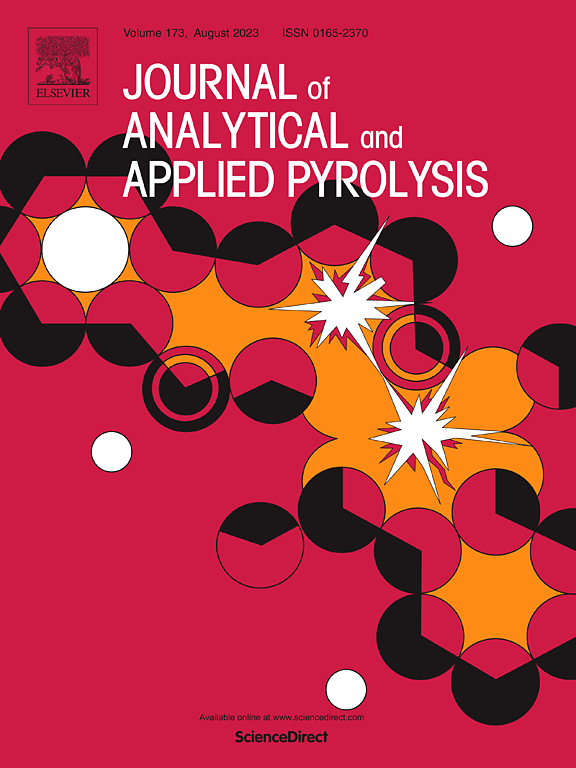Preparation of hierarchically porous graphitic carbon materials from peanut shell via a facile catalytic activation method for supercapacitor applications
IF 5.8
2区 化学
Q1 CHEMISTRY, ANALYTICAL
引用次数: 0
Abstract
In this study, peanut shells are selected as a biomass raw material, and biomass-based hierarchically porous graphitic carbons (PS@FN) are prepared by the synergistic effect of Fe catalysis and KOH activation. The obtained porous graphitic carbon material PS@FN has a large specific surface area of 1664.0 m2 g−1 and a good distribution of large-medium-small pore structure. Simultaneously, there is a notable enhancement in the level of graphitization, accompanied by a 13.8 % decrease in the ID/IG value. In order to investigate the potential of the samples as supercapacitor electrode materials, the porous graphitic carbon materials are tested for electrochemical properties by the related researchers. In the three-electrode system, the specific capacitance of PS@FN can reach 384.9 F g−1 at a current density of 1 A g−1 under the environment of 6 M KOH electrolyte, and remains as 311.3 F g−1 at 10 A g−1, with a capacitance retention rate of 80.87 %. In the two-electrode system, the energy density of PS@FN is 7.5 W h kg−1 at a power density of 625 W kg−1, and is still maintained at 6.9 W h kg−1 at 3125 W kg−1. A capacitance retention of 98.16 % is obtained after 10,000 charge/discharge cycles.
以花生壳为原料,用易催化活化法制备超级电容器用分层多孔石墨碳材料
本研究选择花生壳作为生物质原料,通过铁催化和KOH活化的协同作用制备生物质基分层多孔石墨碳(PS@FN)。所得多孔石墨碳材料PS@FN具有较大的比表面积(1664.0 m2 g−1)和良好的大、中、小孔结构分布。同时,石墨化水平显著提高,同时ID/IG值降低13.8 %。为了研究样品作为超级电容器电极材料的潜力,相关研究人员对多孔石墨碳材料进行了电化学性能测试。在三电极体系中,PS@FN可以达到384.9的比电容 F g−1的电流密度1 g−1的环境下6 M KOH电解质,和仍然是311.3 F g−1 10 g−1,电容保持率为80.87 %。在二电极体系中,PS@FN的能量密度是7.5 W h公斤−1的功率密度625 W 公斤−1,和仍然维持在6.9 W h公斤−1在3125 W 公斤−1。在10,000次充放电循环后,电容保持率为98.16 %。
本文章由计算机程序翻译,如有差异,请以英文原文为准。
求助全文
约1分钟内获得全文
求助全文
来源期刊
CiteScore
9.10
自引率
11.70%
发文量
340
审稿时长
44 days
期刊介绍:
The Journal of Analytical and Applied Pyrolysis (JAAP) is devoted to the publication of papers dealing with innovative applications of pyrolysis processes, the characterization of products related to pyrolysis reactions, and investigations of reaction mechanism. To be considered by JAAP, a manuscript should present significant progress in these topics. The novelty must be satisfactorily argued in the cover letter. A manuscript with a cover letter to the editor not addressing the novelty is likely to be rejected without review.

 求助内容:
求助内容: 应助结果提醒方式:
应助结果提醒方式:


